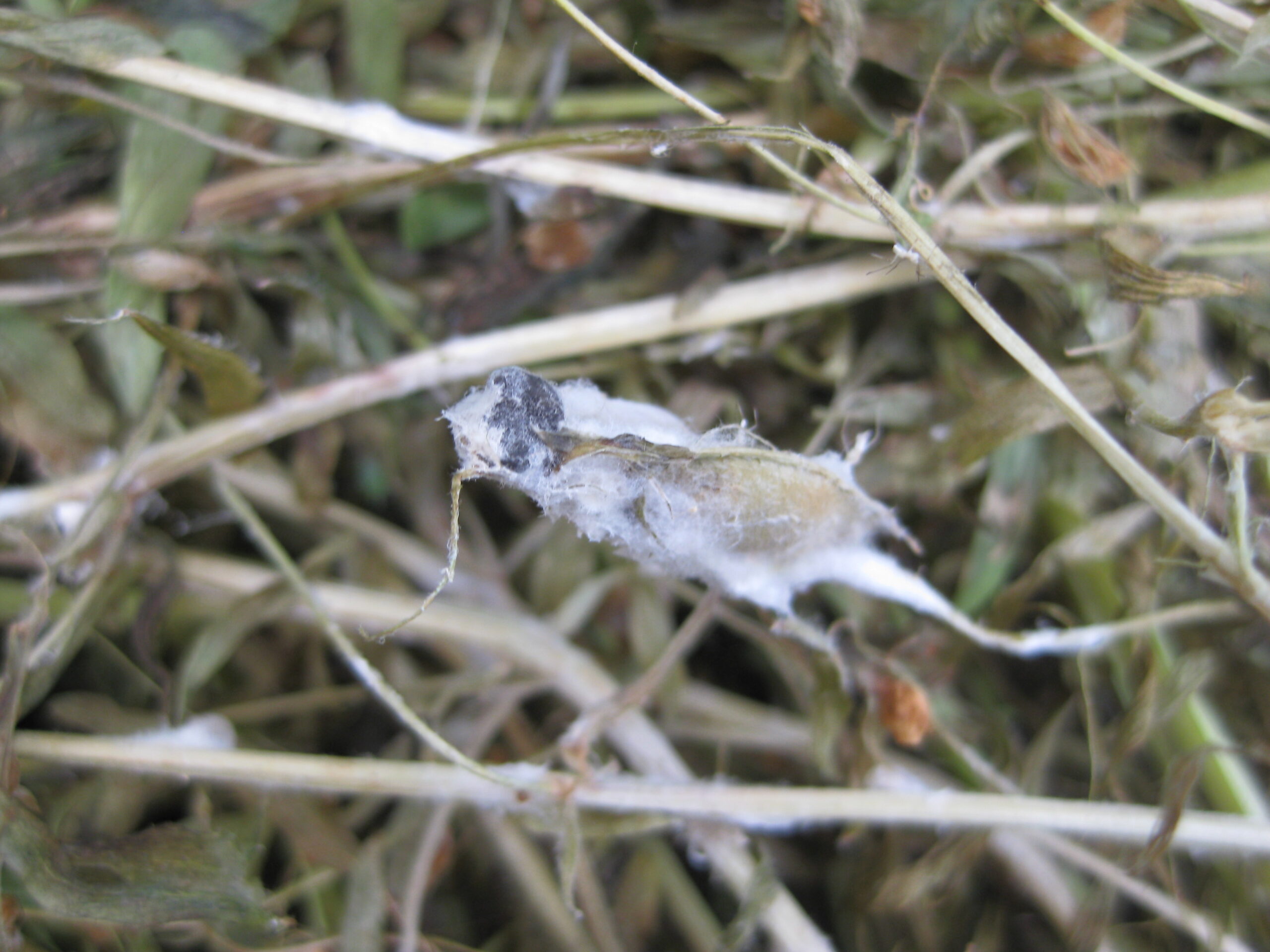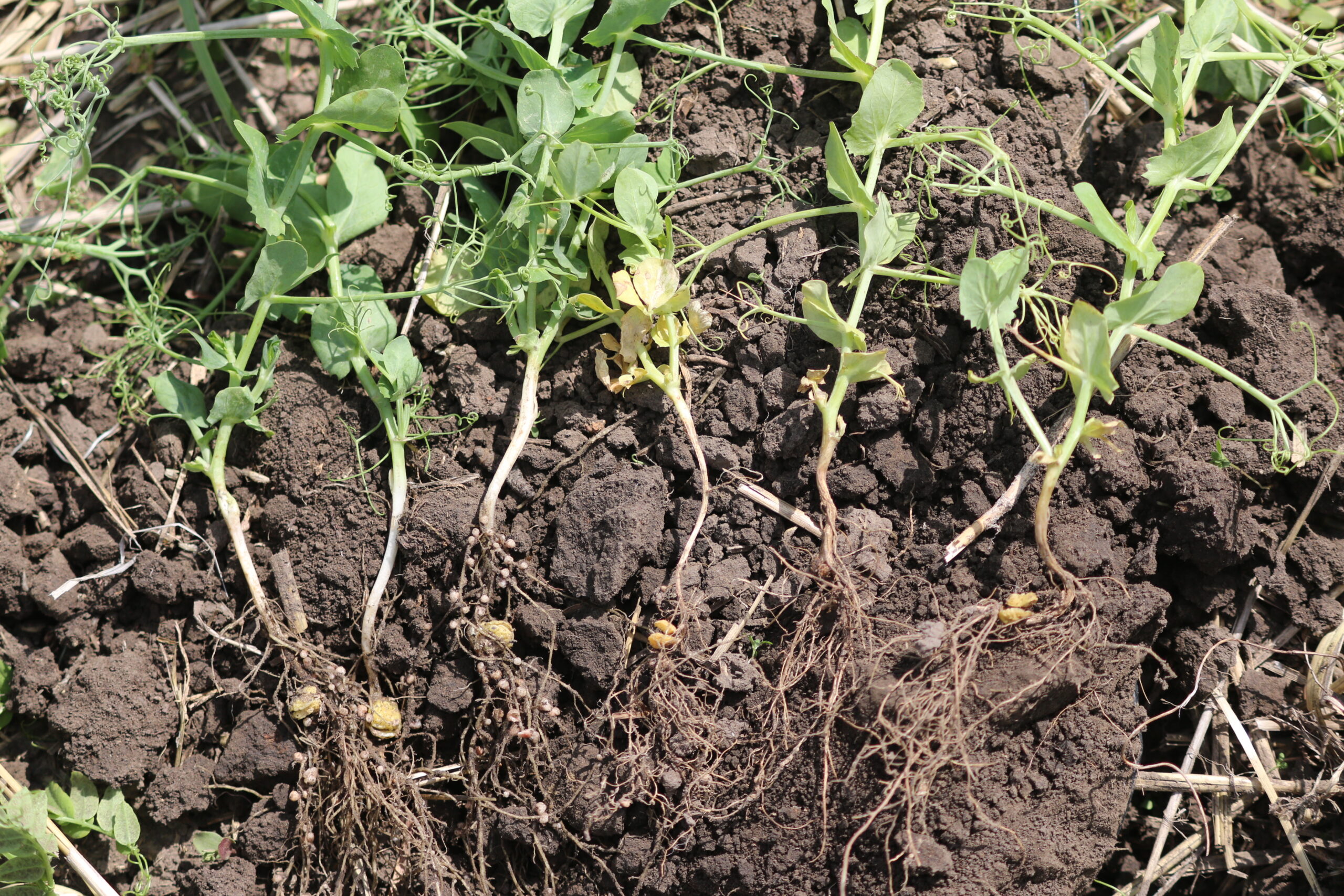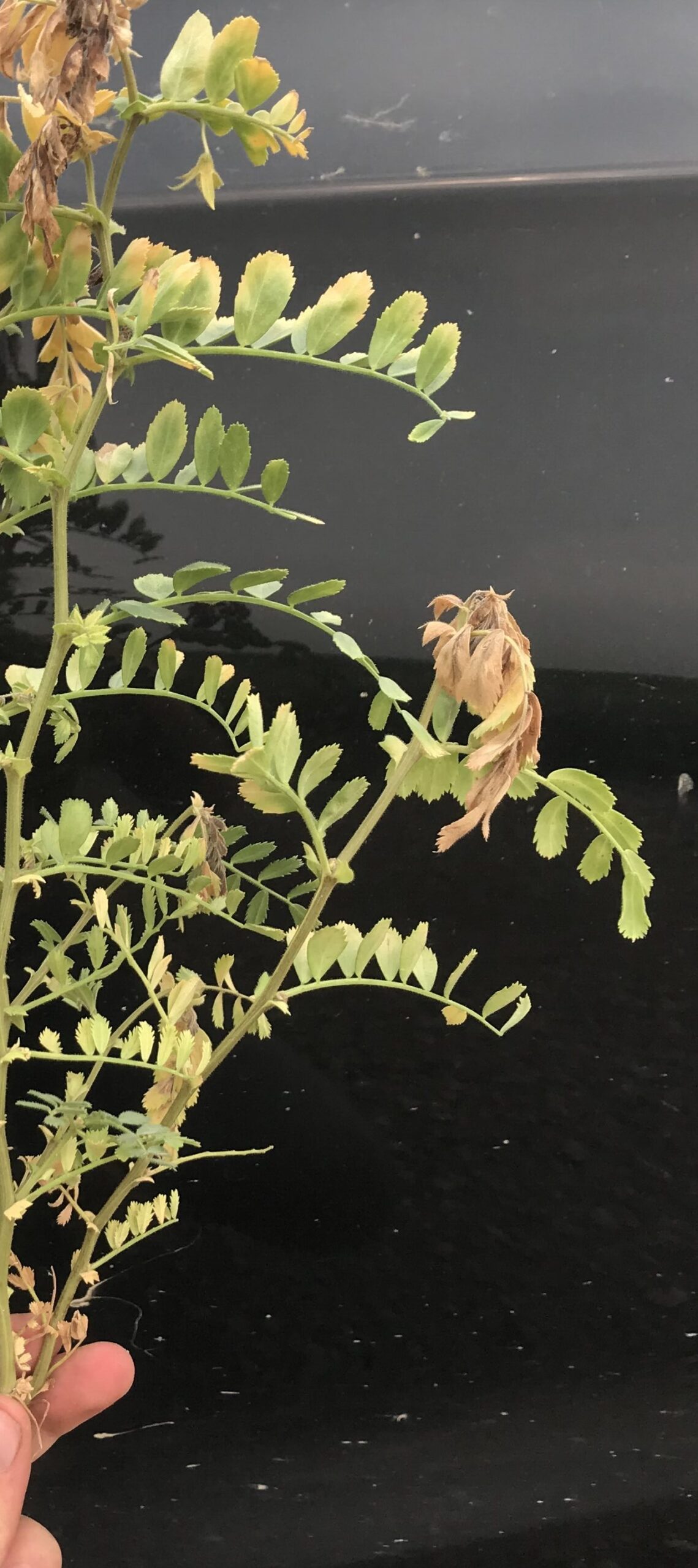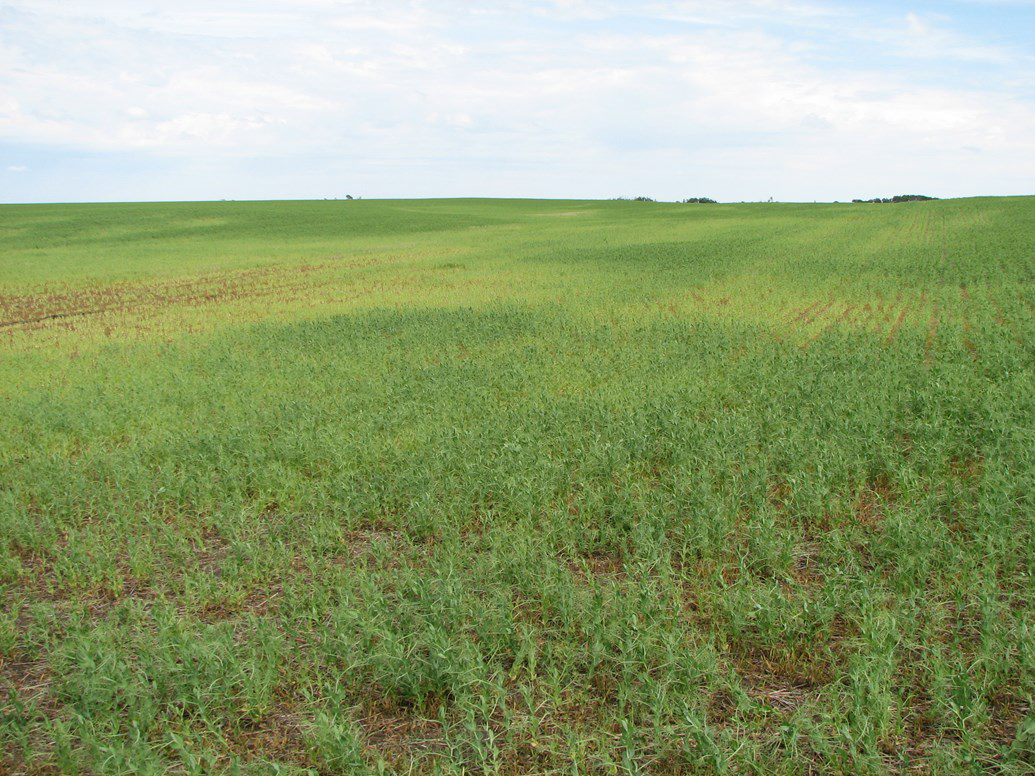By Donna Fleury, P. Ag
Warm, humid, and moist environmental conditions create an ideal opportunity for disease development in many crops across Saskatchewan. Sclerotinia, a later season fungal disease, occurs under the right conditions in lentils, peas, and other susceptible crops across the province. Growers need to be prepared to start scouting and assess the risk of this disease. Sclerotinia infection in pulses leads to stem and pod rot, crop lodging, and reduced seed fill.
Sclerotinia (Sclerotinia sclerotiorum) or white mould requires wet environment conditions for infection to develop. The risk of sclerotinia increases with heavy, dense canopies where there is less air movement and moist microclimate conditions conducive for disease development. Environmental conditions and disease risk vary from region to region and even field to field, and can change quickly. Growers need to be scouting, watching the weather forecast, and assessing their risk regularly.
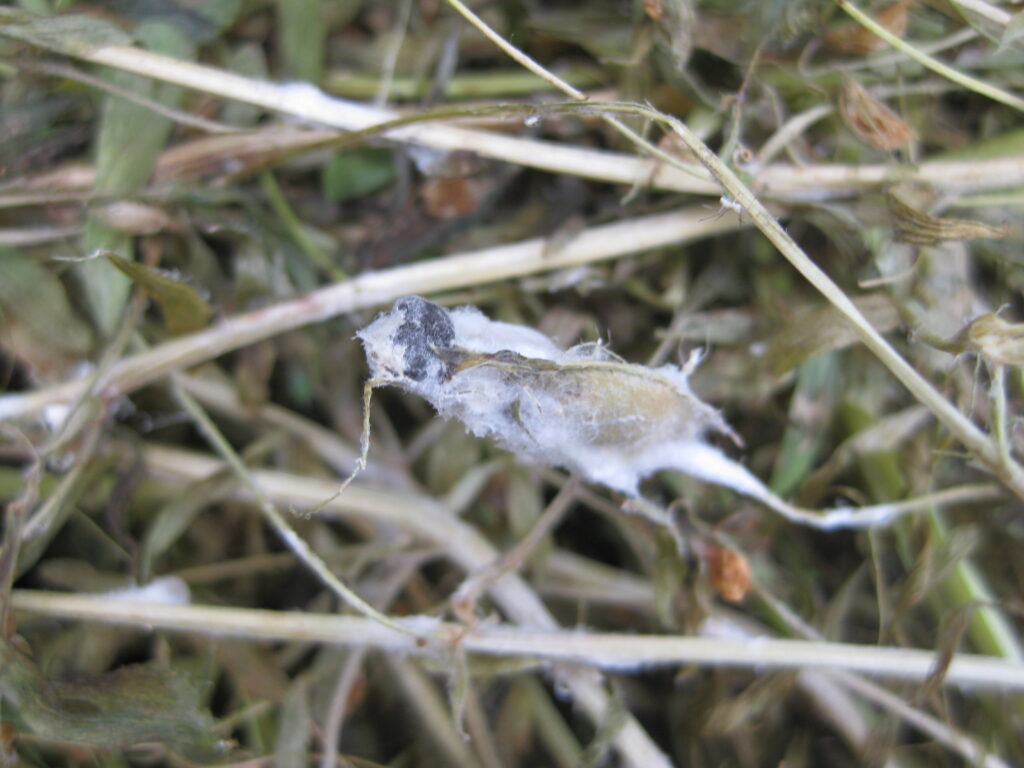
Source: Saskatchewan Ministry of Agriculture
Dale Risula, Provincial Specialist, Special Crops, Saskatchewan Ministry of Agriculture (SMA) encourages growers to review the history of their field and start scouting early. Sclerotinia is a disease of many broadleaf crops and weeds, with canola, peas, lentils, and other pulses as primary hosts. Although soybeans are susceptible to early disease infection, in some instances later infection can actually be beneficial by helping the crop mature faster. Like many diseases, the risk of sclerotinia infection depends on the three factors of the disease triangle: a host crop, the disease pathogen, and the right environment for infection and disease development. Sclerotinia is a disease that has one infection and growth cycle during the growing season. Although if infection occurs early in the season at flowering and pod fill, it can cause more of an impact than later in the season.
Start scouting early before flowering and if the risk assessment indicates a fungicide application is required, then begin application at the early flowering stage or appropriate label staging. Fungicide applications are preventative only, so the symptoms for sclerotinia will not be visible until it is too late in the season for the fungicide to be effective. Growers are really scouting for environmental conditions that will be influencing disease development. There are various fungicides registered for control of sclerotinia in different crops. For crops with other diseases, growers may want to select a product or tankmix that controls sclerotinia and other diseases if required. Use the Guide to Crop Protection for selecting registered products for control of sclerotinia in various crops, taking previous field and fungicide history into account.
Barb Ziesman, Provincial Specialist, Plant Disease with the SMA recommends that if growers determine the risk of sclerotinia disease development is high and decide to use a fungicide to manage the disease, then an application must be made prior to canopy closure. Using recommended water volume and pressure is key in order to ensure the fungicide application penetrates through the canopy and reaches the lower leaves and stems. Pulse crops, especially lentils, can develop extremely dense canopies, which can make it difficult to get the fungicide where it needs to be to be effective. Always make sure to follow a very diverse fungicide rotation to reduce the risk of potential fungicide resistance.
Growers should also follow up with scouting the field at the end of the season to evaluate their management decision. If a fungicide was used, consider leaving a couple of check strips to reassess the control strategy to help decisions in the future. Check for disease symptoms such as bleached stems, and if there are humid and wet conditions, fluffy white mycelium growth on the external parts of the stem in crops like lentils.
The sclerotia, or small black fungal resting spores, overwinter on or just below the soil surface, and germinate when conditions are right to produce small mushroom-like structures. The sclerotia can generally survive for up to five years in a field, making field disease history important. Keep a field and fungicide history to help with decisions in the next cropping season. Using fungicides only when the environmental conditions and disease risk assessment indicates it is required, not as a routine strategy, reduces resistance risk and helps to keep the tools effective and available in the future.
